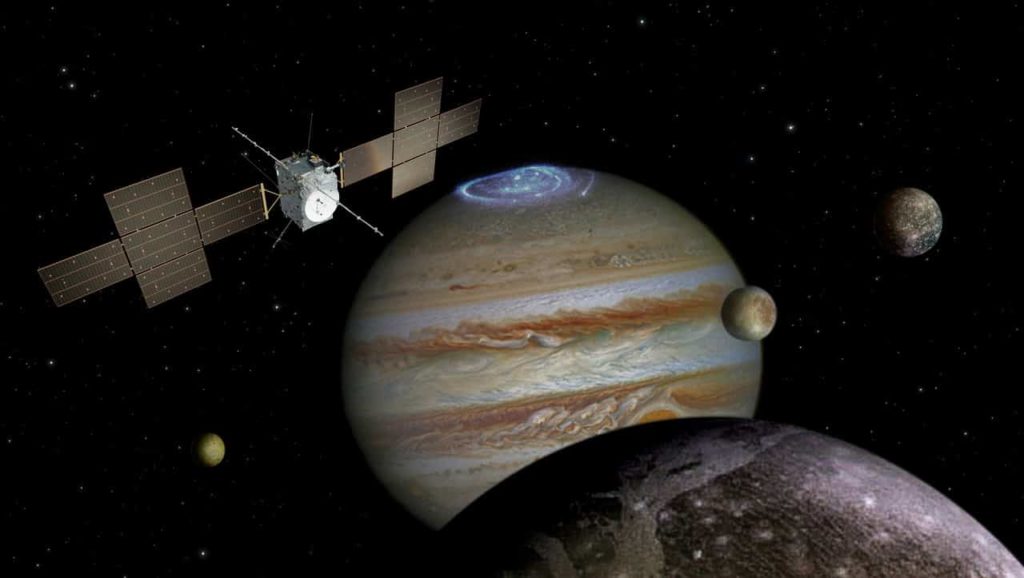
What is The Largest Planet in The Universe?
Last Updated: August 15, 2023
Jupiter may be massive at over 11x times wider than Earth, but size is relative. We always have to ask how big an object is in comparison to something else because as the saying goes, “there’s always a bigger fish” or shark or whale. While Jupiter may be big, it’s about a tenth the size of our Sun, and it’s easy to spiral out from there to other stars and galaxies, making Jupiter as tiny as a grain of sand.
But, let’s keep it simple. What’s the biggest planet out there?
First of all, we have to define what we mean by the largest. Big can imply the surface area of an object as well as its volume or its mass. While these things tend to correlate fairly well here on Earth, especially in our daily lives, in the universe, things get a little weird and counterintuitive as we get bigger.
Above a certain mass, the atoms begin to compress so drastically that it actually shrinks the planet in terms of surface area. For instance, Jupiter is three times Saturn’s mass, but only slightly larger in terms of width (11x that of Earth compared to 10x respectively).
However, there are some exceptions. There are puffy planets outside of our solar system made of much lighter elements that have been observed as up to twice as wide as Jupiter but containing much less mass such as WASP-17b which was discovered in 2009 with twice the radius of Jupiter, but only 48.6% of Jupiter’s mass or TOI-3757b which we discussed in our previous article on the coolest and weirdest exoplanets.
There are many other discovered large puffy planets that have low mass, but up to 2x the width of Jupiter seems to be the limit according to what we have discovered so far.
Astronomers tend to consider mass as the most important factor when defining the largest in terms of astronomical bodies, so we will follow their lead for this article.
The largest planet discovered so far
While we are always discovering new objects and the number of confirmed planets orbiting stars other than our own, known as exoplanets, continues to rise (almost 5,500 confirmed and almost 9,800 candidates as of early August 2023), the current largest planet discovered is ROXs 42 Bb.
Meet exoplanet ROXs 42 Bb
This gas giant (like Jupiter) discovered in 2013 lies nearly 500 lightyears away orbiting an M-type (red dwarf) star (ROXs 42 B) 1.34 times as wide as our Sun but cooler and dimmer.
ROXs 42 Bb’s radius is 1.12 times that of Jupiter’s with a mass of 9 Jupiters. This means that while it is only about 12% wider than Jupiter it “weighs” or is as massive 9 Jupiters.
ROXs 42 Bb takes 1,968.3 Earth years to complete one orbit around its star which lies 157 times further away than Earth lies from the Sun. This is a very big planet lying very far away from its star.
It was found using Direct Imaging, meaning that observatories were able to actually image it by covering up the overpowering light of its star. This form of exoplanet detection is relatively new in the age of exoplanet hunting, but expanding rapidly.
It is still unclear how this planet formed with current proposals including the gradual accumulation of gas, dust, and other materials (accretion) from the core of the star, gravitational instability in the system, or formation more similar to a binary star, but failed.
Preliminary models suggest an effective temperature (calculated by determining how much of the star’s light it receives and disregarding atmospheric effects) of over 3,000 degrees Fahrenheit or 1730 degrees Celsius compared to Earth’s effective temperature of 2.2 degrees Fahrenheit (-19 degrees Celsius).
Its atmosphere is likely cloudy and dusty though continued study is needed.
Important note: it is extremely difficult to define the line between a giant planet and a brown dwarf, which are essentially failed stars since they didn’t gain quite enough mass to start nuclear fusion in the core.
Brown dwarfs are currently classified as approximately 13 times the mass of Jupiter, meaning ROXs 42 Bb still lie within the current definition of a gas giant according to current data. At least 5 potential exoplanets around ROXs 42Bb could be brown dwarfs due to ranging data that is still being confirmed.
Conclusion
While Jupiter is the largest planet in our solar system, it certainly isn’t the largest planet out there. While “big” is both relative to what it is being compared to and dependent on the definition (surface area, mass, etc.), there are many detected and likely undetected planets in space bigger than Jupiter.
While there are puffy planets that have been discovered as up to twice the width of Jupiter, but a fraction of the mass, the current acknowledged largest planet discovered is ROXs 42 Bb at only 12% wider than Jupiter but 9 times as massive.
The beauty of space exploration is that this record holder may be beaten at any point, but it is currently the heavyweight champion of the discovered planets in the universe.

Sarah Hoffschwelle is a freelance writer who covers a combination of topics including astronomy, general science and STEM, self-development, art, and societal commentary. In the past, Sarah worked in educational nonprofits providing free-choice learning experiences for audiences ages 2-99. As a lifelong space nerd, she loves sharing the universe with others through her words. She currently writes on Medium at https://medium.com/@sarah-marie and authors self-help and children’s books.
Wow! There's more to read 🚀
This page is part of our collection of astronomy articles. If you enjoyed the read, then you’ll love the following articles.




